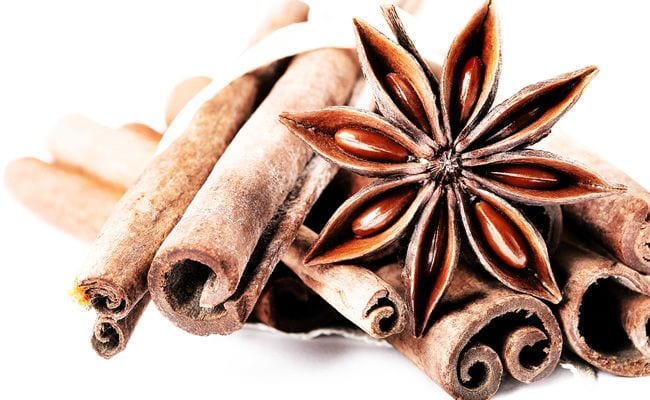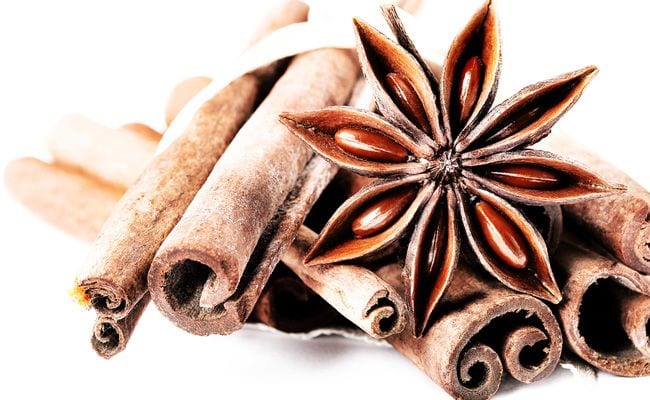
Spices & Seasons is a mixed offering from home cook and blogger Rinku Bhattacharya. While her love of cooking shines from every page, the book is marred by minimal editing and limited spellchecking. Poor organization stymies willing cooks. Information about spices, alone and in combination, is spread throughout the book. The various subrecipes beneath main entries send readers hunting through the book in the midst of cooking.
This is all a shame, for Bhattacharya is an earnestly sweet kitchen presence with much to offer. One suspects she carried the production of Spices & Seasons entirely on her shoulders. This would be overwhelming for anyone, much less a married financial professional with two children. Bhattacharya deserves better.
Daunting organization and at times curious grammar aside (pepper grows on trees in this book, asparagus on bushes), I recommend readers stay the course, for Bhattacharya’s warmth and workable recipes make Spices & Seasons a useful addition to any kitchen. Her attempts to eat seasonally, sustainably, and mindfully are commendable.
Like Eugenia Bone, Bhattacharya practices a kitchen ecosystem, utilizing vegetable ends, hoarding paper bags and avoiding paper towels. While not a canner, she makes extensive use of her freezer, passing along tips to readers. And even a grouch like me warms to a woman who mentions her “foodie cat”.
Bhattacharya echoes Yotam Ottolenghi when writing her approach to sustainability is by necessity flexible. Both are in places where availability of fresh food is dictated by a harsh climate. Ottolenghi lives in the British Isles, Bhattacharya in New York’s Hudson Valley, where freezing winters close the farmer’s markets. Whatever the season, many Indian spices aren’t local to the United States. Yet Bhattacharya notes the importance of sustainable seafood purchases, a point many recent cookbooks have overlooked. She compensates for international purchases come spring and summer, when spouse Anshul cultivates a lush backyard garden.
I tried numerous recipes from Spices & Seasons. All were reasonably easy, producing brightly flavored food. In two instances, the dishes never reached the table. Before leaping in, however, we need to discuss nonstick spray. Several recipes in Spices & Seasons advise using nonstick spray on food before cooking it.
After speaking with numerous home cooks, I can only conclude this practice is unusual. One woman told me dieters used nonstick spray on food to cut fat, then pulled a disgusted face. The uniform response was horrified shuddering. Then, while consulting another recipe, I found this remark by Amanda Hesser in the The Essential New York Times Cookbook: “I did my very best to rid this book of all “nonstick spray” and yet here it is (it makes a few other appearances, but let’s not discuss the details).”
Hesser goes on to “grudgingly admit” nonstick spray is useful for coating a waffle iron. Her recipe comes from Mollie Katzen, whose cookbooks advocate cooking spray as a nonstick medium for coating baking or cooking pans—never the food itself.
Years ago, following Katzen’s lead, I purchased organic cooking spray. I tried it on a muffin tin. It was at once weirdly dry yet oily. After reading scary things about propellants in the sprays, I went back to butter and paper tin liners. Use your judgment.
Some American cooks find Indian spice lists daunting. Bhattacharya does her best to demystify their use, but this information is so haphazardly arranged that using it is difficult. Again, a skilled editor’s hand would have helped enormously.
Into the Kitchen
Kale and Potato Patties, or Tikkis, were test driven without kale. Yes, I was lazy, but Bhattacharya prepares her Tikki without kale, writing the best ones are made using minimal flour. Lacking both Bhattacharya’s courage and besan, or chickpea flour, I tapped three tablespoons of white flour into my potato mixture and blindly moved forward.
Bhattacharya writes that tikkis are addictive, an assertion I can substantiate. The In-House Recipe Taster, aka my husband, and I wolfed these little mouthfuls down. Cutlery would only have interrupted our indelicate gorging.
The Salads, Condiments, and Chutneys chapters offers standards like Mint Chutney and Mango Salsa. I was ready to make Tamarind and Date Chutney when a variation caught my eye: Tamarind Mayonnaise. Fans of tamarind’s compellingly sour taste and mayonnaise’s creamy decadence are advised to prepare this in small quantities. Especially if there are any tikkis around.
Pity the poor brown lentil, forever shadowed by brother Puy: so French, so handsomely slate green. So uppity, with its A.O.C. denomination. So damned expensive. Fragrant Brown Lentil Soup redeems the plain brown lentil, boosting its quiet flavor with cayenne, cumin, and cilantro. Butter and rice are delicious options; with Basmati rice it was a feast. Puy who?
Kashmiri Lamb Stew might halt cooks without “tomato starter” on hand. After flipping around to figure out what this was, then doing it again for the tablespoon of cumin-coriander powder, I wished Bhattacharya had offered alternatives for each. Don’t let a lack of these essentials deter you from the recipe. Tomato starter is a basic tomato sauce with fresh ginger, while a bit of cumin-coriander powder can be whipped up rapidly. Sensitive types might choose to tone down the intensely spicy result. The rest of us will happily sweat, mopping our foreheads.
Chicken Orzo Pilaf contains instructions for boneless chicken thighs. I was using bone-in thighs, as I always do (bones = stock!). Instructions to turn off the heat during the final 20 minutes of cooking worried me. Slice your chicken into small, boneless pieces, checking for doneness by cutting into it. Organic meat will be pinker at the bone, but should give easily. The juices will run clear. Raw chicken is unsafe and unpalatable. Better to turn the stove back on for a few moments, as I did. Don’t risk getting sick.
Once you are assured of cooked chicken, the dish is lovely. The half-cup of yogurt is an instant beautifier, the all-purpose food-world cosmetic. It also serves to gentle the garlic and green chili, leading to a soft rather then fiery final result.
Truly, the naan that won the day. If you are Paleo or otherwise carb-avoidant, set your principles aside for one evening to prepare this magnificent treat. The recipe is simple. No fancy equipment necessary; I used a cast-iron skillet. It’s amazing that such delicious flatbread can come from flour, yeast, eggs, a little yogurt, and time. Taking Bhattacharya’s suggestion of including a little Chicken Tikka or mashed potato, I boiled a potato while the dough rose. This was another recipe that saw poor table manners but no table.
My final venture was into the world of desserts, a land seldom visited. Cottage Cheese and Chocolate Truffles is devastatingly rich, even if, like me, you omit the dark chocolate drizzle. The cheese is a variant of paneer, made by culturing milk with lemon juice. Don’t be discouraged by what appears a pathetic amount of cheese. The mixture gains heft you stir in cream and butter. One also adds white chocolate and a modest amount of sugar. Are you headed for the gym yet?
The cooled mixture is rolled into balls, then drizzled with dark chocolate and butter. Or not. The result a sophisticated, pretty dessert with a decidedly adult taste. Nor is it difficult, even for kitchen klutzes like me. I’d be curious to try this with a quality commercial ricotta and even less sugar.
Many more recipes from Spices & Seasons tempt. Roasted Spice-Rubbed Cauliflower takes this celebrity vegetable in a refreshing direction with fenugreek, turmeric, and a squeeze of lime. Red Lentil With Thyme and Shallots is on the table in less time than it took to type this sentence. Creamy Coconut Egg Curry swaps buttermilk for coconut milk, making this rich dish less guilt-inducing.
Bhattacharya has carried off the difficult trick of working American foodstuffs into an Indian register without sacrificing either cuisine’s integrity. All too often this kind of fusion cooking feels forced, or worse, collapses beneath a pretentious ingredient list. Bhattacharya is far too modest—and far too interested in actually cooking—to engage is this sort of culinary gamesmanship. Her remark about veganizing Palak Paneer is telling:
“I am not a fan of modifying an original with substitute ingredients. I feel that is somehow suggests the new dish is an inferior makeover of the original.”
Cookbook lovers have become accustomed to a nearly impossible production standard. After plunking down $25, $35, even $45 bucks, we expect our purchases to pay off with entertaining writing, tight editing, and museum-level photography. That the recipes will work despite wildly varying cooking equipment, kitchens, and skill levels goes without saying.
A book like Spices & Seasons challenges these assumptions, forcing the cookbook consumer back to the basic reason for buying a cookbook: to cook from it. Not the writing, not the editing, not the pictures.
The food.
Sometimes the food isn’t enough. But when it is, serious cookbook users must reconsider that glossy surface—or lack thereof. Admittedly, the imperfect cookbook is not without its frustrations. Yet when the recipes lead to great food, as they do here, we are wise to ignore the rough edges. Take Spices & Seasons into the kitchen and cook from it. You won’t be disappointed.


![Call for Papers: All Things Reconsidered [MUSIC] May-August 2024](https://www.popmatters.com/wp-content/uploads/2024/04/all-things-reconsidered-call-music-may-2024-720x380.jpg)



